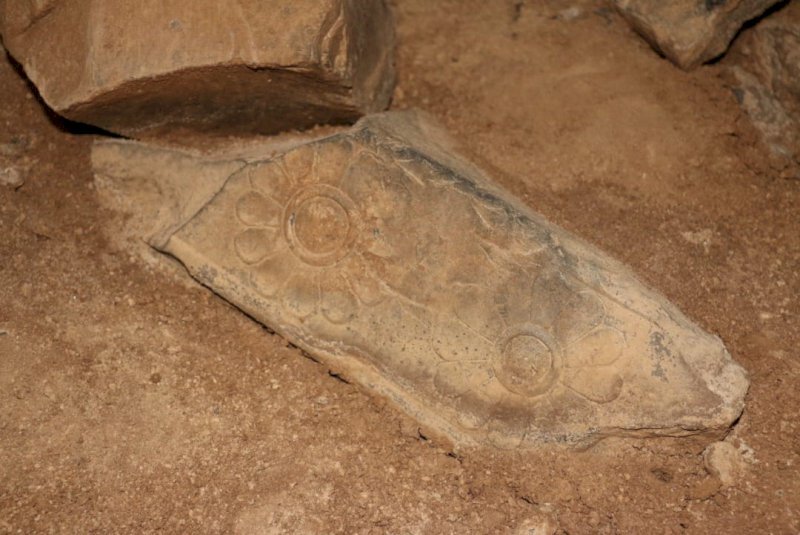Hundreds of engraved stones discovered in Persepolis

TEHRAN – Hundreds of engraved stones and fragmented bas-relief carvings have recently been discovered in the ruined Tachara Palace, located in heart of the UNESCO-registered Persepolis, southern Fars province.
The discovery has taken place during the fifth season of an archaeological survey, probing a sophisticated water management system beneath the ruins of the Persepolis, archaeologist Ahmad Ali Asadi said on Monday.
The bas reliefs probably are related to the northern stairs of the H Place, Asadi was quoted as saying by CHTN.
Among the engraved stones there are pieces with human and plant motifs, and at least one of the stones has cuneiform inscriptions, and if the collection of stones is explored fully, it will probably discover more inscribed pieces, he added.
Tachara is one of the oldest and most interesting palaces of Persepolis that its charming structure is situated south of the Apadana and on a platform 2.20-3m higher than the level of the latter and the adjacent courtyard.
Persepolis website says that Tachara was built on a rectangular plan, measuring 40m by 30m, and a north-south axis. It consists of the main hall with twelve columns, two smaller columned halls on the north, a columned portico on the south, and several guardrooms or storage chambers on either side. A stairway with two reversed flights leads to the portico from a courtyard on the south. The inner walls of these flights are sculptured with representations of servants and attendants, dressed alternately in the «Median» and «Persian» costumes, carrying food and utensils.
A frieze consisting of several scenes is sculptured in the center of the facade of the staircase. In the upper part of the middle section is the winged circle (the Iranian Glory), flanked by two antithetic seated sphinxes who each raise a hand towards it in a gesture of veneration.
Behind each sphinx is a terrace of palm trees. Below this scene is two antithetic rows of nine soldiers in the «Persian» costume (fluted cylindrical tiaras, flowing skirts, and three-strapped shoes). They are facing a cuneiform inscription in Old Persian carved by Xerxes in a rectangular area framed by bands of rosettes.
The main hall and other rooms are provided with rectangular niches, each of which is hewn from a single block of stone and is crowned with a vertically fluted architrave element known as the Egyptian covetto cornice. Originally, five doors pierced the walls of the main hall: two opening into the pair of four-columned northern rooms, one giving access to the southern portico, and two leading into the adjacent western and eastern chambers.
Persepolis, also known as Takht-e Jamshid, whose magnificent ruins rest at the foot of Kuh-e Rahmat (Mountain of Mercy) is situated 60 kilometers northeast of the city of Shiraz in Fars province. The city was burnt by Alexander the Great in 330 BC apparently as revenge on the Persians because it seems Xerxes had burnt the Greek city of Athens around 150 years earlier.
ABU/AFM
